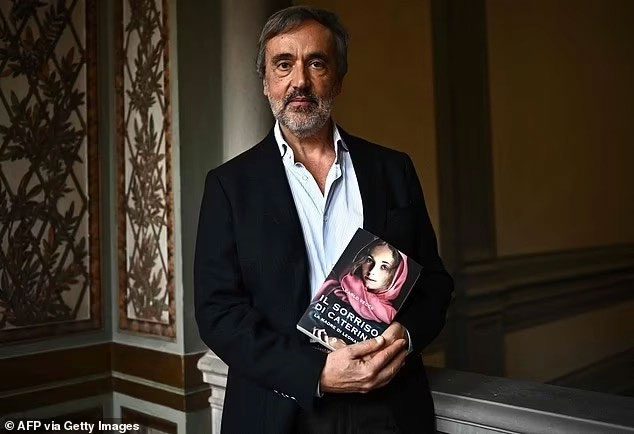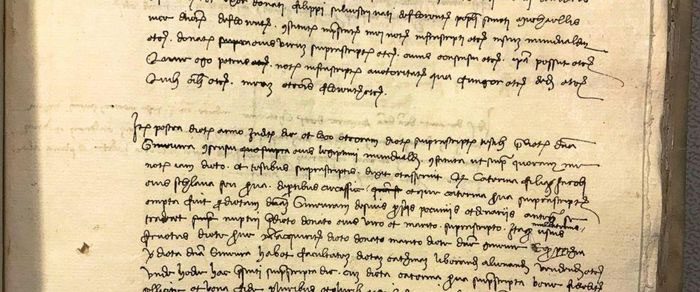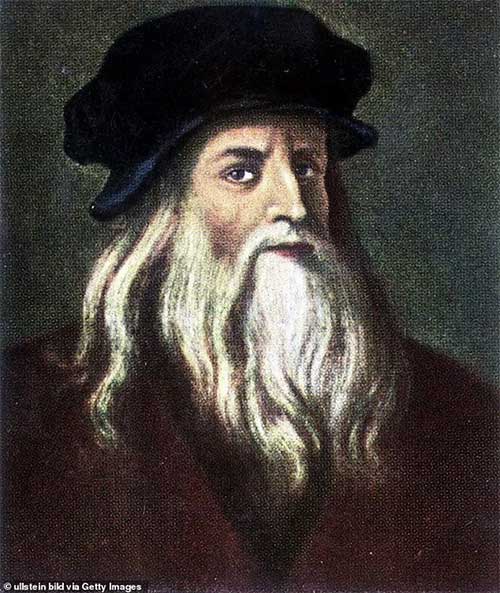A new study reveals that the painting genius Leonardo da Vinci carried only half Italian blood, as his mother was a slave from the Caucasus region (located at the border between Asia and Europe).
Previously, it was believed that Caterina di Meo Lippi, Leonardo da Vinci’s mother, was a peasant in Tuscany (Italy). However, a Renaissance art expert believes the truth is more complex.
During the launch of his new book The Smile of Caterina, Carlo Vecce, a professor at the University of Naples (Italy), told AFP that Caterina was a Circassian slave from the Northwest Caucasus who was sold to the cities of Venice and then Florence in Italy. At her final destination, she met a young notary, Piero da Vinci. They married and had a son named Leonardo.

Professor Carlo Vecce launching his book about Leonardo da Vinci’s mother. (Photo: Getty Images).
According to Daily Mail, Professor Vecce has spent decades researching the creator of the Mona Lisa. He made this statement after exploring and studying the archives of Florence.
Any new discovery about da Vinci is fiercely debated by the experts researching him, but Professor Vecce, recognized as a leading scholar in the field, asserts that there is evidence.
Among the documents he found is a document written by da Vinci’s father himself. This is a certificate of legal emancipation for Caterina, restoring her freedom and dignity.

An ancient document of Piero da Vinci discovered by historian Carlo Vecce. (Photo: ABC News).
The document dates back to 1452 – the year of da Vinci’s birth. Professor Vecce publicly presented it at a press conference at the Giunti publishing house in Florence on March 14. He stated that it was written by “the man who loved Caterina when she was still a slave, with whom she bore a son named Leonardo and who also helped free her.”
This new discovery completely changes the perception of da Vinci.
When Caterina was thought to be a peasant, historians pointed out that being born in a village on the outskirts of Florence meant da Vinci did not receive formal education to follow in his father’s footsteps. Instead, he began his career as an apprentice in the workshop of Florentine painter Verrocchio. By the age of 18, he became a member of the prestigious painters’ guild, wearing a rose-colored tunic and sporting a long curly beard.
However, if Caterina was a slave and came from elsewhere, Professor Vecce believes that her difficult life influenced her genius son’s work.
“Caterina left Leonardo a great legacy, certainly the spirit of freedom that inspired all his intellectual scientific creations. He did not let anything stop him,” the expert analyzed.

His origins are thought to influence da Vinci’s great career. (Photo: Getty Images).
Dr. Matthew Landrus, also a leading scholar on da Vinci, stated that Professor Vecce’s work is “very important and fascinating.”
He told MailOnline that it provides scholars with valuable information and increases the discussion about Caterina.
Paolo Galluzzi, a historian and member of the prestigious Lincei Academy of Sciences in Rome (Italy), remarked that this research is so far the most convincing.
He emphasized to AFP that it would not be surprising if da Vinci had slave origins.
“The era in which da Vinci was born marked the beginning of modernity, the interaction between people, cultures, and civilizations that gave rise to the modern world,” he explained.
In addition to being born out of wedlock, da Vinci was also left-handed – considered a curse from the devil at that time. He was also suspected of being homosexual during a historical period when same-sex love could lead to severe consequences.
Despite all this, he became a cultural icon of Italy. He produced works of great value, not only financially but also historically and artistically, such as Mona Lisa, The Last Supper (the last meal of Jesus with his disciples before crucifixion), Vitruvian Man (a naked man in two overlapping postures)…
Not only in painting, he also demonstrated genius abilities in civil engineering, music, architecture, sculpture, and military machinery.
He designed versions of airplanes and helicopters centuries before the first powered flight.
His dissections of human bodies, which were taboo at the time, shed light on knowledge of muscles and the nervous system.
Unfortunately, these achievements were hidden for 200 years. Upon his death, he left his notes to his young apprentice Francesco Melzi. Melzi’s son later inherited these notes and stored them in an attic.


















































